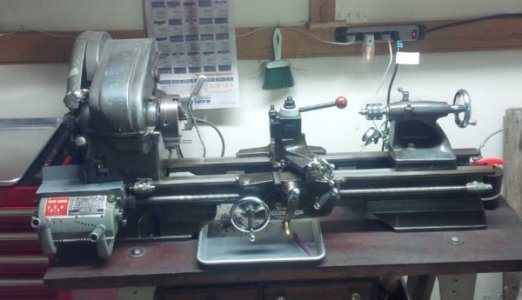- Joined
- Mar 14, 2013
- Messages
- 736
CaveBob, l want to see that QCGB.
I know, I know, Get my DC motor going.
I still have to finish the powered leadscrew too.
The thing that always got me about the Logan, you might have gears set up for a nice slow finish cut,( Right to left) but then to do a cross cut, it seemed way faster.
The D/C leadscrew motor hopefully will take care of that. It has started to warm up here, So I either need to get on it, or come up with a new excuse.....................LOL.
I did do some wiring tonight though for the 1/2 HP DC motor.
I might have to go out and buy some 16AWG tomorrow.
I know, I know, Get my DC motor going.
I still have to finish the powered leadscrew too.
The thing that always got me about the Logan, you might have gears set up for a nice slow finish cut,( Right to left) but then to do a cross cut, it seemed way faster.
The D/C leadscrew motor hopefully will take care of that. It has started to warm up here, So I either need to get on it, or come up with a new excuse.....................LOL.
I did do some wiring tonight though for the 1/2 HP DC motor.
I might have to go out and buy some 16AWG tomorrow.

